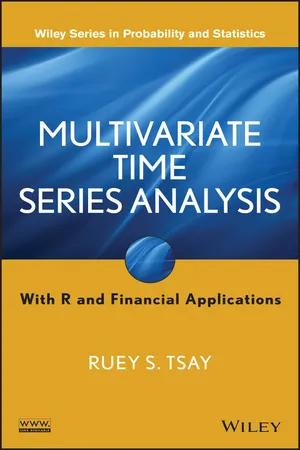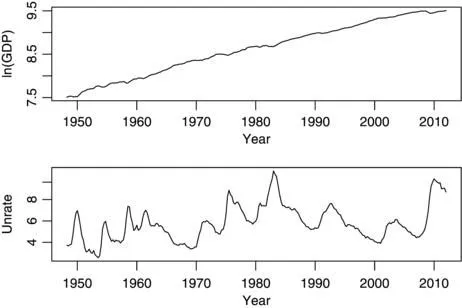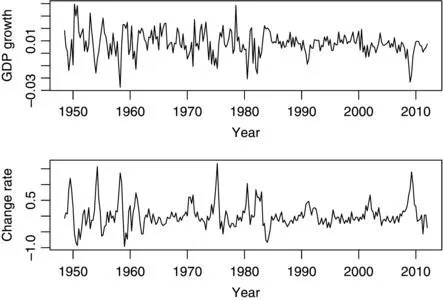
- English
- ePUB (mobile friendly)
- Available on iOS & Android
About this book
An accessible guide to the multivariate time series tools used in numerous real-world applications
Multivariate Time Series Analysis: With R and Financial Applications is the much anticipated sequel coming from one of the most influential and prominent experts on the topic of time series. Through a fundamental balance of theory and methodology, the book supplies readers with a comprehensible approach to financial econometric models and their applications to real-world empirical research.
Differing from the traditional approach to multivariate time series, the book focuses on reader comprehension by emphasizing structural specification, which results in simplified parsimonious VAR MA modeling. Multivariate Time Series Analysis: With R and Financial Applications utilizes the freely available R software package to explore complex data and illustrate related computation and analyses. Featuring the techniques and methodology of multivariate linear time series, stationary VAR models, VAR MA time series and models, unitroot process, factor models, and factor-augmented VAR models, the book includes:
• Over 300 examples and exercises to reinforce the presented content
• User-friendly R subroutines and research presented throughout to demonstrate modern applications
• Numerous datasets and subroutines to provide readers with a deeper understanding of the material
Multivariate Time Series Analysis is an ideal textbook for graduate-level courses on time series and quantitative finance and upper-undergraduate level statistics courses in time series. The book is also an indispensable reference for researchers and practitioners in business, finance, and econometrics.
Frequently asked questions
- Essential is ideal for learners and professionals who enjoy exploring a wide range of subjects. Access the Essential Library with 800,000+ trusted titles and best-sellers across business, personal growth, and the humanities. Includes unlimited reading time and Standard Read Aloud voice.
- Complete: Perfect for advanced learners and researchers needing full, unrestricted access. Unlock 1.4M+ books across hundreds of subjects, including academic and specialized titles. The Complete Plan also includes advanced features like Premium Read Aloud and Research Assistant.
Please note we cannot support devices running on iOS 13 and Android 7 or earlier. Learn more about using the app.
Information
CHAPTER 1
Multivariate Linear Time Series
1.1 INTRODUCTION



Table of contents
- Cover
- WILEY SERIES IN PROBABILITY AND STATISTICS
- Title page
- Copyright page
- Dedication
- Preface
- Acknowledgements
- CHAPTER 1: Multivariate Linear Time Series
- CHAPTER 2: Stationary Vector Autoregressive Time Series
- CHAPTER 3: Vector Autoregressive Moving-Average Time Series
- CHAPTER 4: Structural Specification of VARMA Models
- CHAPTER 5: Unit-Root Nonstationary Processes
- CHAPTER 6: Factor Models and Selected Topics
- CHAPTER 7: Multivariate Volatility Models
- APPENDIX A: Review of Mathematics and Statistics
- Index
- WILEY SERIES IN PROBABILITY AND STATISTICS